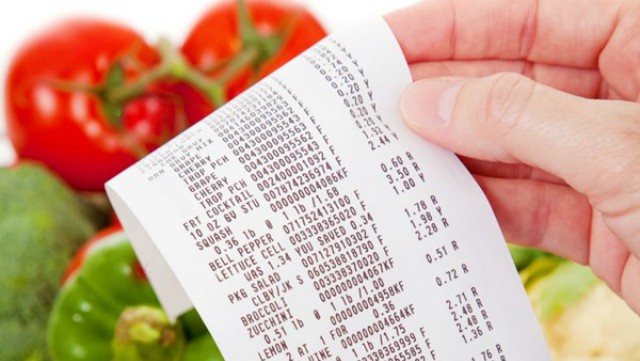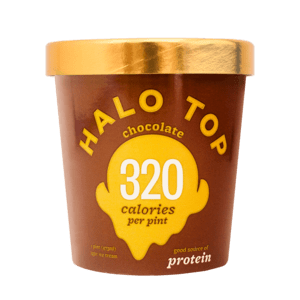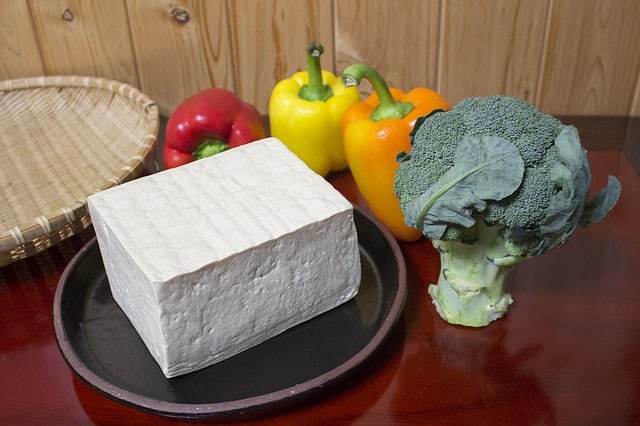This week’s Nutrition Diva podcast episode talks about the concept of fiber density and why it matters. Many high-fiber foods are also high in calories. If you’re looking to increase fiber but keep calories under control, you want foods with a high fiber density.
We can calculate the fiber density of a food by dividing the fiber by the calories and multiplying by 100. For example, the fiber density of raspberries is 12.5, means that 100 calories of raspberries contains 12.5 grams of fiber. (Although the calories and fiber will change with the serving size, the fiber density will always remain the same.)
Here’s a table showing how various foods rank in terms of their fiber density. You can sort the table by any value by clicking on the column header.
For example, sort by Fiber to see which foods provide the most fiber per serving. Sort by Fiber Density to see which foods provide the most fiber for the least calories.
| Food | Amount | Fiber (g) | Calories | Fiber density |
|---|---|---|---|---|
| Wheat bran | 1/4 cup | 6.6 | 32 | 20.63 |
| Endive, raw | 1 cup | 1.6 | 8 | 20 |
| Turnip greens, cooked | 1 cup | 5 | 29 | 17.24 |
| Chicory greens, raw | 1 cup | 1.2 | 7 | 17.14 |
| Hero.co plain bagel | 1 bagel | 21 | 130 | 16.1 |
| Cauliflower, cooked | 1 cup | 4.9 | 31 | 15.81 |
| Mustard greens, cooked | 1 cup | 4.2 | 28 | 15 |
| Kale, raw | 1 cup | 0.9 | 7 | 12.86 |
| Raspberries, raw | 1 cup | 8 | 64 | 12.5 |
| Romaine lettuce | 1 cup | 1 | 8 | 12.5 |
| Collards, cooked | 1 cup | 7.6 | 63 | 12.06 |
| Chinese broccoli, cooked | 1 cup | 2.2 | 19 | 11.58 |
| Broccoli, cooked | 1 cup | 4.7 | 41 | 11.46 |
| Celery | 1 cup | 1.6 | 14 | 11.43 |
| Artichokes, cooked | 1 choke | 6.8 | 61 | 11.15 |
| Passionfruit | 1 cup | 24.5 | 229 | 10.7 |
| Swiss chard, cooked | 1 cup | 3.7 | 35 | 10.57 |
| Green beans, cooked | 1 cup | 4 | 38 | 10.53 |
| Spinach, cooked | 1 cup | 4.3 | 41 | 10.49 |
| Radishes | 1 cup | 1.9 | 19 | 10 |
| Spinach, raw | 1 cup | 0.7 | 7 | 10 |
| Zucchini, cooked | 1 cup | 2.9 | 31 | 9.35 |
| Asparagus, cooked | 1 cup | 3.6 | 40 | 9 |
| Green peppers, raw | 1 cup | 2.5 | 30 | 8.33 |
| Cabbage, cooked | 1 cup | 2.8 | 34 | 8.24 |
| Winter squash, cooked | 1 cup | 6.6 | 82 | 8.05 |
| Black beans | 1 cup | 16.6 | 218 | 7.61 |
| Alfalfa sprouts | 1 cup | 0.6 | 8 | 7.5 |
| White beans | 1 cup | 18.6 | 254 | 7.32 |
| Chia seeds | 1 Tbsp | 5 | 70 | 7.14 |
| Lentils, cooked | 1 cup | 15.6 | 230 | 6.78 |
| Strawberries, raw | 1 cup | 3 | 49 | 6.12 |
| Bulgur, cooked | 1 cup | 8.2 | 151 | 5.43 |
| Bran flakes | 1 cup | 7.2 | 133 | 5.41 |
| Oranges | 1 cup | 4.4 | 85 | 5.18 |
| Flaxseed | 1 Tbsp | 2.8 | 55 | 5.09 |
| Chickpeas | 1 cup | 10.6 | 211 | 5.02 |
| Kiwi | 1 cup | 5.4 | 110 | 4.91 |
| Avocado | 1 cup | 12.9 | 276 | 4.67 |
| Mushrooms | 1 cup | 0.7 | 15 | 4.67 |
| Blueberries | 1 cup | 3.6 | 84 | 4.29 |
| Pumpkin seeds | 1 cup | 3 | 71 | 4.23 |
| Sweet potatoes, baked | 1 cup | 6.6 | 180 | 3.67 |
| Grapefruit | 1 cup | 2.5 | 74 | 3.38 |
| Banana | 1 cup | 5.8 | 200 | 2.9 |
| Pasta, whole grain, cooked | 1 cup | 5.3 | 184 | 2.88 |
| Hummus | 1/4 cup | 3.6 | 144 | 2.5 |
| Quinoa, cooked | 1 cup | 5.2 | 222 | 2.34 |
| Almonds | 1/4 cup | 4.5 | 207 | 2.17 |
| Sunflower seeds | 1/4 cup | 3 | 175 | 1.71 |
| Brown rice, cooked | 1 cup | 3.5 | 218 | 1.61 |
| Tofu | 1/2 cup | 2.9 | 181 | 1.6 |
| Walnuts | 1/4 cup | 2 | 190 | 1.05 |


 Piper writes:
Piper writes: